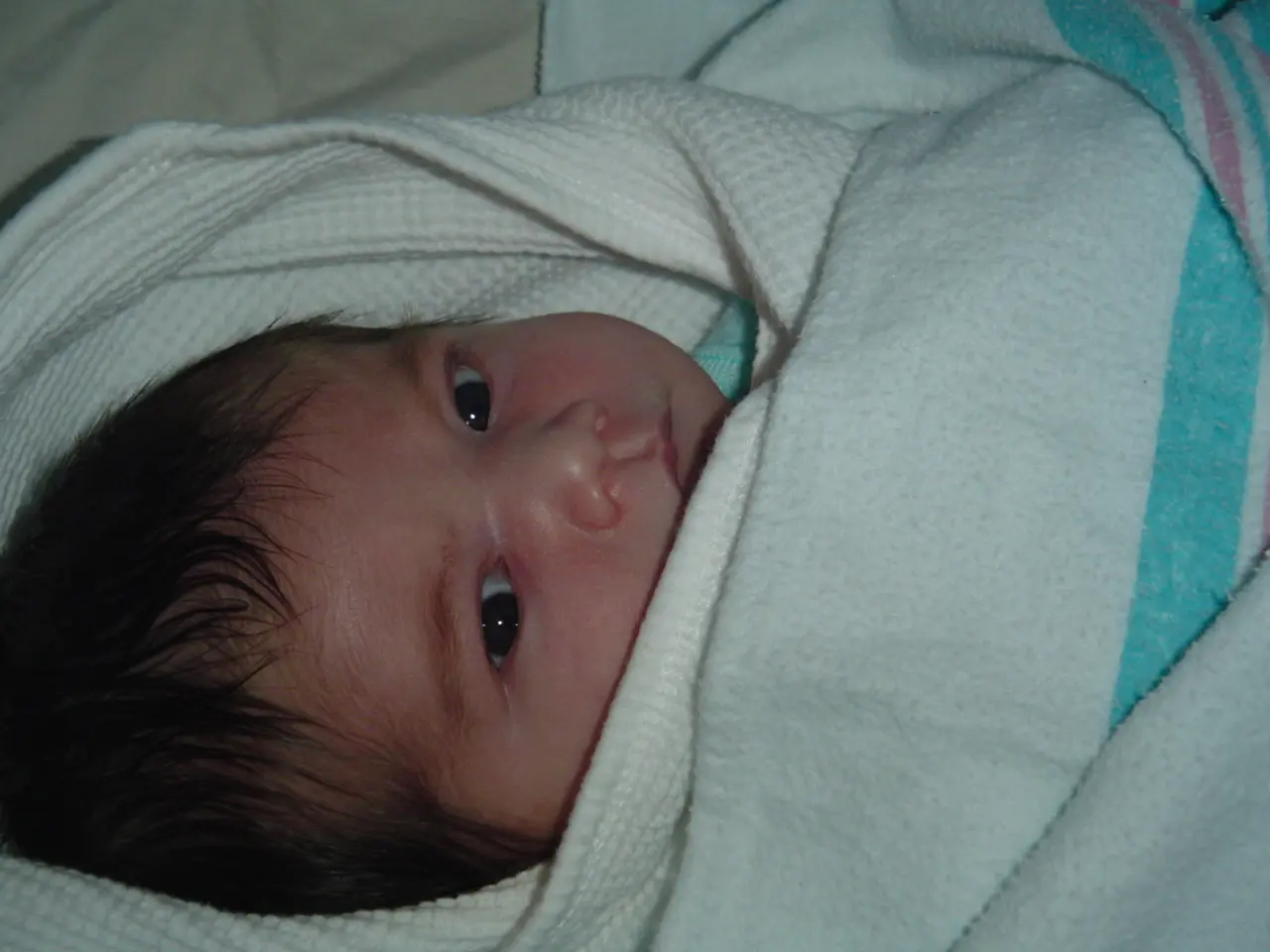Children's Sickle Cell Anemia: Understanding Causes, Remedies, and Additional Facts
Sickle cell anemia is a severe form of sickle cell disease (SCD) that affects children worldwide. This condition arises when a child inherits two copies of an S protein gene, HbSS, which produces an abnormal form of hemoglobin.
Hemoglobin, a protein found in red blood cells, gives them their colour and aids in carrying oxygen throughout the body. In children with sickle cell anemia, the abnormal hemoglobin causes red blood cells to become crescent or sickle-shaped, clumping together and impeding blood flow. This can lead to a host of complications.
Caregivers play a crucial role in managing their child's sickle cell anemia. They should keep a close eye on their child's health, contacting a doctor if symptoms worsen, the child experiences complications from treatment, appears ill or in pain, or if a baby's development is not on track.
Common complications in children with sickle cell anemia include growth and developmental delays, stroke, splenic sequestration, acute chest syndrome, bone and joint problems, and other organ complications.
Growth and developmental delays, including delayed puberty, can be among the first signs of sickle cell anemia. Stroke, caused by sickled cells blocking blood vessels in the brain, may present with subtle symptoms or involve weakness, speech difficulty, or paralysis. Splenic sequestration, where the spleen suddenly traps sickled cells causing a rapid drop in hemoglobin, can be life-threatening, especially in children under 5 years old.
Acute chest syndrome, presenting with chest pain, cough, fever, and difficulty breathing, is a common and serious complication. Bone and joint problems, including avascular necrosis (bone death due to poor blood supply), bone infarcts, and infections such as osteomyelitis, can also occur. Other organ complications involving the heart, lungs, kidneys, eyes (retinopathy), and gallstones can also arise. Priapism, a prolonged, painful erection without sexual stimulation, occurs mostly in boys.
Treatment for sickle cell anemia focuses on preventing complications and managing symptoms. Health maintenance and early diagnosis with regular monitoring of growth and development are essential. Blood transfusions may be administered in cases of severe anemia to prevent or treat stroke and improve oxygen delivery. Pain management during crises using analgesics as needed is also important.
Vitamin supplementation to address nutritional deficits affecting growth, splenectomy (removal of the spleen) if severe splenic sequestration occurs repeatedly, and medications such as hydroxyurea, which reduces the frequency of pain crises and acute chest syndrome, are also part of the treatment plan.
L-glutamine, an oral medication that reduces pain, and Voxelator (Oxbryta), a drug that helps reduce the sickling of blood cells, are additional treatment options. Crizanlizumab (Adakveo), an IV medication that helps make red blood cells slippery, is another tool in the arsenal of treatments for sickle cell anemia.
Emergency care is critical if complications like stroke, acute chest syndrome, or severe splenic sequestration appear.
In addition to medical care, caregivers should explain sickle cell anemia to their child in age-appropriate terms and enroll them in a sickle cell program at a hospital or clinic that regularly treats children with sickle cell anemia. Babies do not show symptoms during the first few months of life due to fetal hemoglobin.
With appropriate medical care, children can and do live healthy, long lives with sickle cell anemia. It is crucial for caregivers to be vigilant, seek prompt medical attention when necessary, and work closely with healthcare providers to manage their child's condition effectively.
- Sickle cell anemia is a severe form of sickle cell disease that arises when a child inherits two copies of an S protein gene, HbSS.
- Caregivers should keep a close eye on their child's health, contacting a doctor if symptoms worsen or the child experiences complications from treatment.
- Common complications in children with sickle cell anemia include growth and developmental delays, stroke, splenic sequestration, acute chest syndrome, bone and joint problems, and other organ complications.
- Growth and developmental delays, including delayed puberty, can be among the first signs of sickle cell anemia.
- Stroke, caused by sickled cells blocking blood vessels in the brain, may present with subtle symptoms or involve weakness, speech difficulty, or paralysis.
- Splenic sequestration, where the spleen suddenly traps sickled cells causing a rapid drop in hemoglobin, can be life-threatening, especially in children under 5 years old.
- Acute chest syndrome, presenting with chest pain, cough, fever, and difficulty breathing, is a common and serious complication.
- Bone and joint problems, including avascular necrosis and bone infarcts, can also occur.
- Other organ complications involving the heart, lungs, kidneys, eyes (retinopathy), and gallstones can also arise.
- Priapism, a prolonged, painful erection without sexual stimulation, occurs mostly in boys.
- Treatment for sickle cell anemia focuses on preventing complications and managing symptoms, including health maintenance, early diagnosis, blood transfusions, pain management, vitamin supplementation, splenectomy, medications like hydroxyurea, L-glutamine, Voxelator, and Crizanlizumab (Adakveo).
- Emergency care is critical if complications like stroke, acute chest syndrome, or severe splenic sequestration appear.
- In addition to medical care, caregivers should explain sickle cell anemia to their child in age-appropriate terms and enroll them in a sickle cell program at a hospital or clinic.
- With appropriate medical care, children can and do live healthy, long lives with sickle cell anemia, but it is crucial for caregivers to be vigilant, seek prompt medical attention when necessary, and work closely with healthcare providers to manage their child's condition effectively.
- Aging, parenting, weight management, cardiovascular health, skin care, mental health, mens health, womens health, fitness and exercise, nutrition, medical conditions such as cance, respiratory conditions, digestive health, eye health, hearing, healthcare including Medicare, cbd, and neurological disorders, and autoimmune disorders may also be important areas to address for a child with sickle cell anemia, depending on their specific needs and circumstances.




